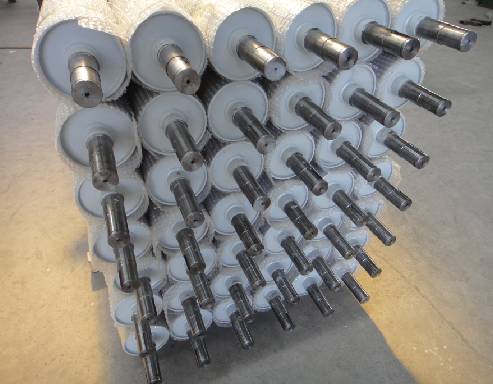 Afrikaans
Afrikaans  Albanian
Albanian  Amharic
Amharic  Arabic
Arabic  Armenian
Armenian  Azerbaijani
Azerbaijani  Basque
Basque  Belarusian
Belarusian  Bengali
Bengali  Bosnian
Bosnian  Bulgarian
Bulgarian  Catalan
Catalan  Cebuano
Cebuano  Corsican
Corsican  Croatian
Croatian  Czech
Czech  Danish
Danish  Dutch
Dutch  English
English  Esperanto
Esperanto  Estonian
Estonian  Finnish
Finnish  French
French  Frisian
Frisian  Galician
Galician  Georgian
Georgian  German
German  Greek
Greek  Gujarati
Gujarati  Haitian Creole
Haitian Creole  hausa
hausa  hawaiian
hawaiian  Hebrew
Hebrew  Hindi
Hindi  Miao
Miao  Hungarian
Hungarian  Icelandic
Icelandic  igbo
igbo  Indonesian
Indonesian  irish
irish  Italian
Italian  Japanese
Japanese  Javanese
Javanese  Kannada
Kannada  kazakh
kazakh  Khmer
Khmer  Rwandese
Rwandese  Korean
Korean  Kurdish
Kurdish  Kyrgyz
Kyrgyz  Lao
Lao  Latin
Latin  Latvian
Latvian  Lithuanian
Lithuanian  Luxembourgish
Luxembourgish  Macedonian
Macedonian  Malgashi
Malgashi  Malay
Malay  Malayalam
Malayalam  Maltese
Maltese  Maori
Maori  Marathi
Marathi  Mongolian
Mongolian  Myanmar
Myanmar  Nepali
Nepali  Norwegian
Norwegian  Norwegian
Norwegian  Occitan
Occitan  Pashto
Pashto  Persian
Persian  Polish
Polish  Portuguese
Portuguese  Punjabi
Punjabi  Romanian
Romanian  Russian
Russian  Samoan
Samoan  Scottish Gaelic
Scottish Gaelic  Serbian
Serbian  Sesotho
Sesotho  Shona
Shona  Sindhi
Sindhi  Sinhala
Sinhala  Slovak
Slovak  Slovenian
Slovenian  Somali
Somali  Spanish
Spanish  Sundanese
Sundanese  Swahili
Swahili  Swedish
Swedish  Tagalog
Tagalog  Tajik
Tajik  Tamil
Tamil  Tatar
Tatar  Telugu
Telugu  Thai
Thai  Turkish
Turkish  Turkmen
Turkmen  Ukrainian
Ukrainian  Urdu
Urdu  Uighur
Uighur  Uzbek
Uzbek  Vietnamese
Vietnamese  Welsh
Welsh  Bantu
Bantu  Yiddish
Yiddish  Yoruba
Yoruba  Zulu
Zulu Benefits of Ceramic Pulley Lagging for Enhanced Conveyor Performance and Durability
The Importance and Benefits of Ceramic Pulley Lagging
In the world of industrial conveyor systems, the efficiency and longevity of the machinery are paramount. One of the often-overlooked components that play a vital role in enhancing the performance of these systems is the ceramic pulley lagging. This article will delve into what ceramic pulley lagging is, its advantages, and why it is essential for modern conveyor systems.
What is Ceramic Pulley Lagging?
Ceramic pulley lagging refers to the application of ceramic tiles bonded to the surface of pulleys in conveyor systems. The primary purpose of lagging is to improve the friction between the pulley and the conveyor belt, preventing slippage and ensuring efficient power transmission. Ceramic lagging typically consists of small ceramic tiles that are adhered to a rubber backing, providing a tough and durable surface that can withstand the rigors of continuous operation.
Benefits of Ceramic Pulley Lagging
1. Enhanced Grip and Reduced Slippage One of the most significant advantages of ceramic pulley lagging is its excellent grip. The hardness of ceramic materials increases the coefficient of friction between the pulley and the belt, effectively reducing slippage, especially in high-tension applications. This is particularly beneficial in industries where material handling is critical, such as mining, quarrying, and heavy manufacturing.
2. Durability and Longevity Ceramic lagging is designed to withstand harsh conditions, including abrasion, impact, and various weather elements. This durability ensures a longer lifespan of the pulley and minimizes the need for frequent repairs or replacements. As a result, companies can reduce downtime and maintenance costs, leading to significant operational savings.
ceramic pulley lagging

3. Resistance to Wear and Tear In applications involving heavy materials, pulleys are often subject to significant wear and tear. Ceramic lagging can resist damage caused by constant friction and material impact, thereby maintaining the integrity of the pulley surface and extending its operating life.
4. Improved Safety A reliable grip between the conveyor belt and the pulley is crucial for safe operation. Slippage can cause sudden stoppages or uncontrolled movements, which can lead to workplace accidents. By utilizing ceramic pulley lagging, companies contribute to a safer working environment, protecting both their employees and equipment.
5. Temperature Resistance Many industrial applications subject conveyor systems to high temperatures. Ceramic materials tend to exhibit good resistance to thermal fluctuations, ensuring that the lagging maintains its integrity even under extreme conditions.
6. Easy Installation Installing ceramic lagging is a straightforward process that can typically be performed without significant modifications to existing machinery. By choosing a reputable supplier, companies can ensure professional application, guaranteeing optimal performance.
7. Cost-Effectiveness While the initial investment in ceramic pulley lagging may be higher than traditional rubber lagging, the long-term savings associated with reduced maintenance, fewer replacements, and enhanced machine performance often outweigh the initial costs. Companies can realize a favorable return on investment through improved efficiency and productivity.
Conclusion
In conclusion, ceramic pulley lagging represents a significant advancement in conveyor technology, providing numerous benefits that lead to enhanced performance, safety, and cost-effectiveness. As industries continue to seek ways to improve operational efficiency and reduce downtime, investing in ceramic lagging for pulleys is a sound strategy. It not only optimizes the function of conveyor systems but also contributes to the overall sustainability of operations in an increasingly demanding industrial environment. Transitioning to ceramic pulley lagging is more than just an upgrade; it is an essential step into the future of durable and efficient material handling.
-
Revolutionizing Conveyor Reliability with Advanced Rubber Lagging PulleysNewsJul.22,2025
-
Powering Precision and Durability with Expert Manufacturers of Conveyor ComponentsNewsJul.22,2025
-
Optimizing Conveyor Systems with Advanced Conveyor AccessoriesNewsJul.22,2025
-
Maximize Conveyor Efficiency with Quality Conveyor Idler PulleysNewsJul.22,2025
-
Future-Proof Your Conveyor System with High-Performance Polyurethane RollerNewsJul.22,2025
-
Driving Efficiency Forward with Quality Idlers and RollersNewsJul.22,2025





























